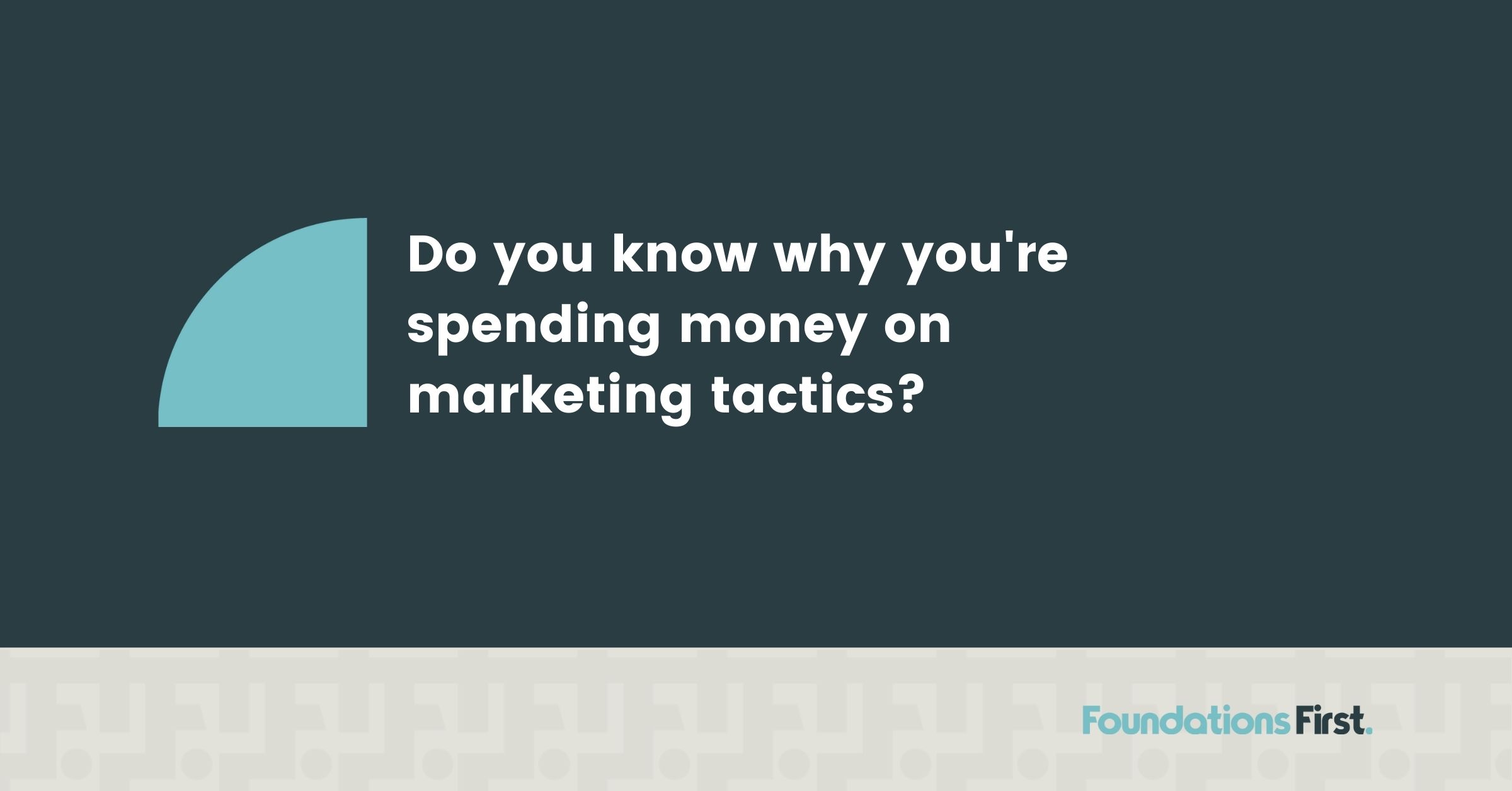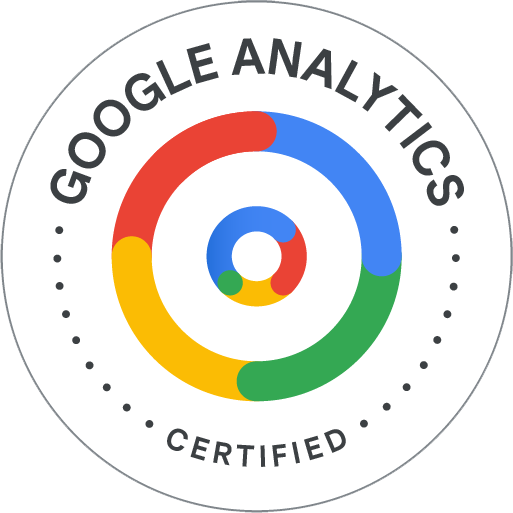Do You Know Why You’re Spending Money on Marketing Tactics?

Getting to the Why of Marketing
I’m in my element when I get to talk about how to help business owners who are struggling with marketing. I recently had a marketing nerd’s jam sesh with Ken Cox on his podcast series, Clicks and Bricks. In that March 4 episode, Ken and I talked about the importance of knowing why you’re using the marketing tactics you’re using.
If you’re a founder contemplating a big spend for a new website, or you’re forking over a ton of money on digital ads, this episode on getting to the why of marketing is for you!
So, why are you spending money on specific marketing tactics?
Before you spend another dime on Facebook ads or yet another blog, you need to stop and ask yourself some why questions.
- Why will your target market respond to that Facebook ad campaign?
- Why are you blogging?
- Why are you using specific tactics?
- Why will this spend get you to where you want to be?
Over the years, our company has worked with 120+ companies from all over the world. Many founders from these companies would say “Hey, Michelle. We’ll pay you to handle our social media or build us a website.” Yet when I asked them why they needed those things, too many didn’t have an answer.
It drove me nuts, and quite frankly, it kept me up at night. But I began to detect clear patterns. Those who came to us knowing exactly why they needed to overhaul their website or boost their presence on social media got returns on their marketing investments. They had a clear vision and a strategy that supported that vision. As a result, their marketing intentions aligned well with that vision. They knew why they were willing to shell out good money for specific tactics, because those tactics supported a focused strategy and direction.
On the other hand, I’ve had too many companies come to me that were spending upwards of $50,000 a month on marketing tactics they didn’t need. When I’d ask those founders why they were spending that much money on those tactics—I’d get crickets. It blew my mind. But I blew their minds when I’d show them where they weren’t getting returns on their marketing investments and what to eliminate to save money on things they didn’t need.
Helping clients get to the why of marketing.
Those experiences refocused my consulting. I started focusing my clients on the ‘marketing whys.’ That takes examining their marketing foundations through a more focused lens. The process is simple, and it absolutely works.
- Foundations First™ Marketing Assessment. We first show our clients where they’re at with a deep dive into 20 different marketing elements to determine what’s working and what isn’t.
- Vision and Strategy. With that sober look at where clients are, we help them articulate their vision and build a doable and reality-based strategy to get there.
- Strategy-Driven Implementation Roadmap. Once clients are clear on where they want to go, we create a sustainable and prioritized marketing plan that focuses on tactics that actually support their vision and strategy.
- Implementation with Guidance and Training. We then guide clients through implementation with one-on-one training and coaching. We level up the entire team, keeping everyone focused on their priorities. Everything they do to execute their roadmap is done with an understanding of why they’re doing it. That why keeps everyone focused.
- Immediate savings. Our clients report immediately saving a ton of money on marketing. Why? Because they’re no longer sidetracked by marketing fads or tactics they don’t need. Nobody is chasing after TikTok simply because the COO has a Gen-Z nephew who “swears by it.” (Not kidding.)
Getting to the why of marketing takes educating leadership.
Company founders have their own unique brilliance, but marketing is not usually part of their skill set. That’s okay, but it’s why our process focuses on educating the entire team, including leadership. During the podcast, I shared an anecdote with Ken about why educating leadership is an essential part of what we do.
Last year I worked with a tech company (30-40 million in revenues) that spends about 30 grand a month on Google and Bing ads. During their marketing assessment, I discovered they had spent thousands of dollars every month on geofencing ads around their board of directors. If you’re not familiar with geofencing, it’s the practice of providing mobile app notifications and pop-up ads to a target group in a specific geographic area. For example, if you’re a restaurant, you might want to buy geofenced ads that pop up when customers are in your neighborhood, or even near a key competitor’s location.
This tech company had purchased geofenced ads around the virtual boundaries of their board member’s homes and offices. Let’s be clear—board members are not their target market, so there was no reason to waste those ad dollars. Marketing created a whole separate campaign just around the board members’ homes so board members could see the ads with their own eyes. Instead of trusting their marketing staff or reviewing KPIs, the company spent thousands of dollars simply to show the board the ads.
And yes, they tried explaining and updating the board on the latest ads running but the board just really liked to see the ads out “in the wild” even if the targeting was fabricated just for their benefit.
When you get to the why of marketing, it’s going to feel good.
When you’re focused on your target market and your strategy is clear, marketing feels good. And it should! If deep down you feel marketing is a skeezy endeavor, you’re doing it wrong. Marketing should light you up. You should be super excited to market in a way that matches your why. Often when I’m talking to founders of SMBs, they cringe. To them, marketing is a guy in a leisure suit hawking a diet miracle or an endless stream of spammy emails. So, the final piece of advice I’d give to anyone feeling like that, is use the tools, the tactics, and the medium that enables you to joyfully reach your target market.
A few weeks back, I was talking to a small business founder. She was nearly in tears, frustrated that she had to post on Facebook. And she hated LinkedIn even more. The whole scene drove her nuts. I wish I could have captured the look on her face when I said, “you don’t need to do that. Just stop. You’re a brilliant speaker. Use that unique brilliance.”
Instead of spending two hours a week getting frustrated on social media, I encouraged her to use that time to go get speaking gigs. And she just lit up! It worked, too. Her revenue has practically doubled since then.
Marketing doesn’t have to feel gross, and if it does, listen to that. Any time you’re authentically communicating directly to your target market, you’re marketing. So do what feels good. I assure you, when you’re communicating in a way that feels good, your target market is going to feel your enthusiasm.
Intention is everything in marketing.
Ken and I talked about shifting your marketing intention from selling to making connections. That’s the crux of getting to the marketing why. If your intention is to sell, sell, sell, you’re probably going to hate marketing. And your efforts are going to land hard on your audience. People don’t like to be sold to. But they do like real talk; they like authentic communication.
When you shift the why of your marketing from selling to engaging, you’re going to find out how you can help your market. Yes, you need to get their attention, but once you do, you need to build their trust. That takes some creativity, and sometimes it’s just a matter of really listening to what they need.
When you’re clear on your intention, things gel. Your marketing strategy gets focused, your tactics support your strategy, and you stop getting distracted by what everybody says you must do. And it feels good! When you get a chance, put your ear buds in and check out my discussion with Ken Cox on Clicks and Bricks. It’s just the right length (35 minutes) for a nice healthy walk in your neighborhood. And let me know if you have any questions.

Michelle Tresemer
Categories
- Analytics and Measurement
- Brand Messaging
- Competitor Analysis
- Content Marketing
- Digital Marketing Strategy
- Digital PR & Events
- Marketing Budgets
- Marketing KPIs
- Marketing News
- Marketing Rock Samples
- Marketing Staffing & Vendors
- Marketing Strategy
- Marketing Tech Stack
- Podcast
- Product Marketing
- Sales Marketing Alignment
- SEO
- Social Media
- Strategic Marketing Partnerships
- Target Markets
- Uncategorized
- Vision & Purpose
- Webmaster








